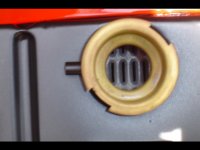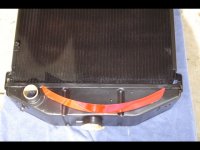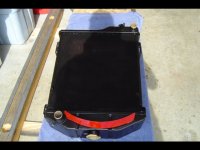Cottontop
Jedi Warrior
Offline
All,
I am in the process of installing a larger radiator in my V8 Healey. I was planning to use a 24" wide that I already have. It is a top down flow, hence is tall.
I started looking at cross flow aluminum radiators. They are not as tall as the tanks are on the ends.
One of our local houses had an double-pass radiator delivered which was not what they ordered from their supplier. The supplier just shipped them a new one. I can buy the double pass considerabley cheeper (about 1/2) than a straight cross flow.
Do any of you have any information or experience on how much better/worse a double pass is when compared to a side to side or a top down ?
It'd be a tight fit since it is 27" wide, but for the price I can get a radiator compressor or a space expander (grin).
Thanks in advance.
Tim
I am in the process of installing a larger radiator in my V8 Healey. I was planning to use a 24" wide that I already have. It is a top down flow, hence is tall.
I started looking at cross flow aluminum radiators. They are not as tall as the tanks are on the ends.
One of our local houses had an double-pass radiator delivered which was not what they ordered from their supplier. The supplier just shipped them a new one. I can buy the double pass considerabley cheeper (about 1/2) than a straight cross flow.
Do any of you have any information or experience on how much better/worse a double pass is when compared to a side to side or a top down ?
It'd be a tight fit since it is 27" wide, but for the price I can get a radiator compressor or a space expander (grin).
Thanks in advance.
Tim

 Hey there Guest!
Hey there Guest!
 smilie in place of the real @
smilie in place of the real @
 Pretty Please - add it to our Events forum(s) and add to the calendar! >>
Pretty Please - add it to our Events forum(s) and add to the calendar! >> 







 A friendly reminder - be careful what links you click on here. If a link is posted by someone you don't know, or the URL looks fishy, DON'T CLICK. Spammers sometimes post links that lead to sites that can infect your computer, so be mindful what you click.
A friendly reminder - be careful what links you click on here. If a link is posted by someone you don't know, or the URL looks fishy, DON'T CLICK. Spammers sometimes post links that lead to sites that can infect your computer, so be mindful what you click.